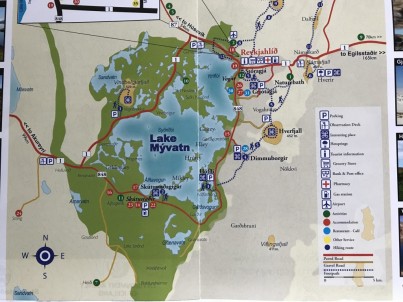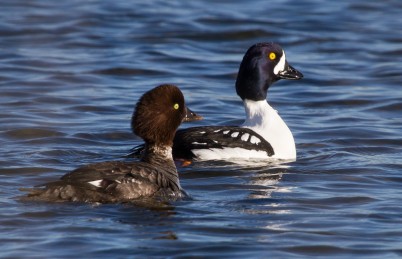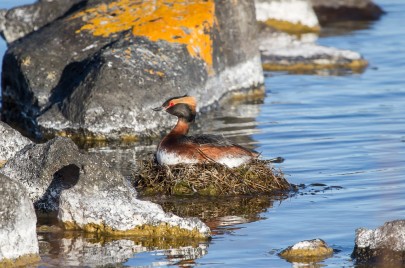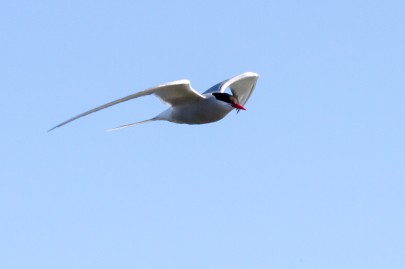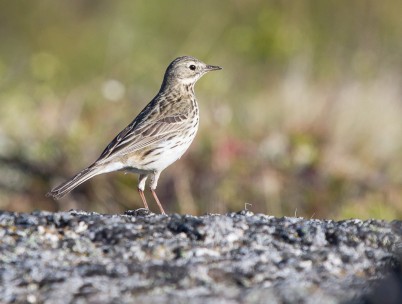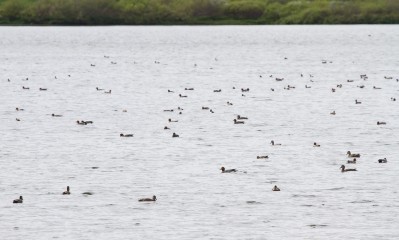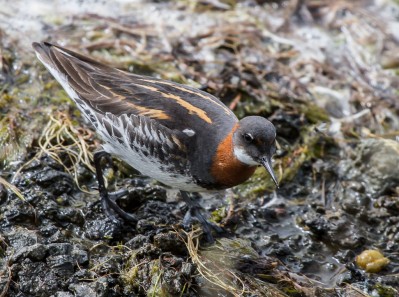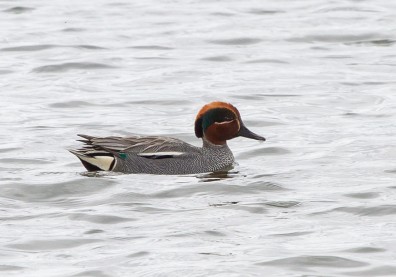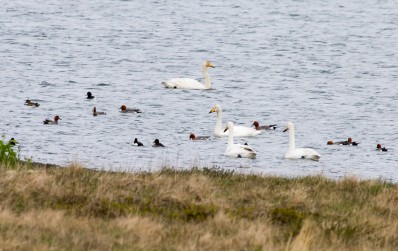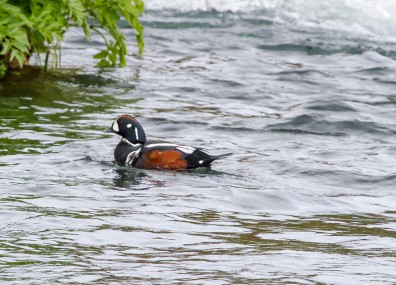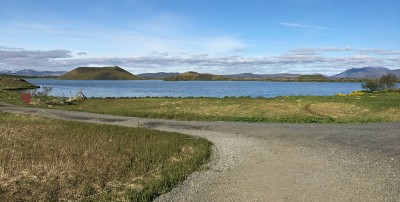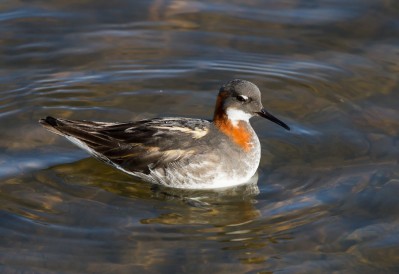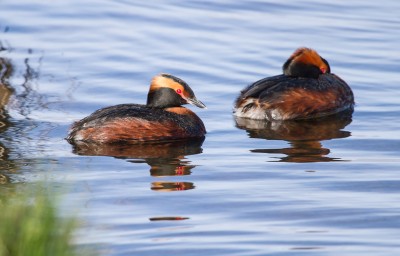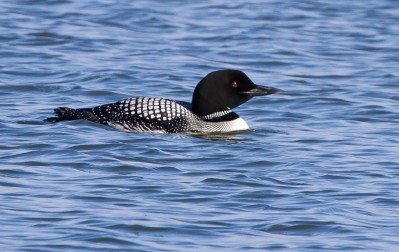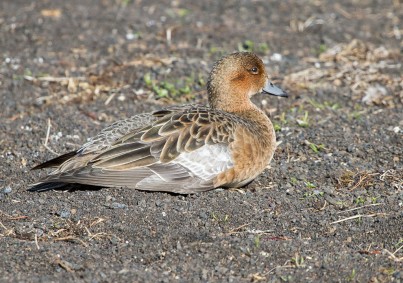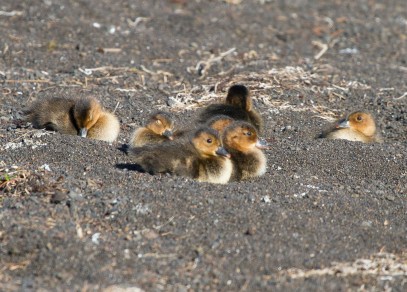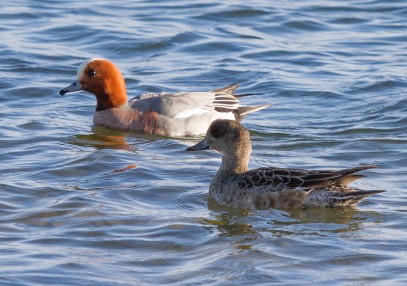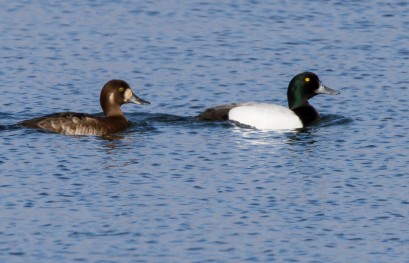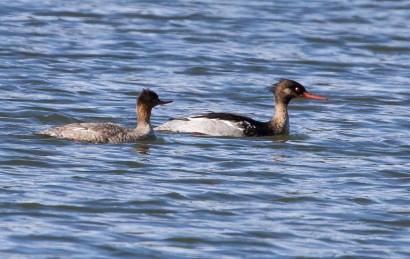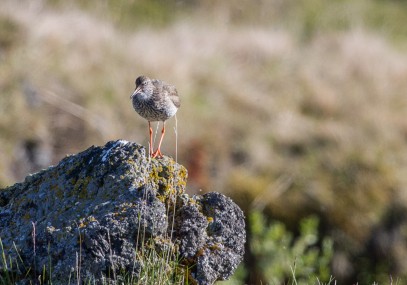Lake Mývatn, Iceland
Drumming Snipes and the constant "kee-errr kee-errr" of Artic terns - that is the sound of Iceland in the summertime, wherever you exit the car on this fantastic island.
Lake Mývatn is a large, shallow and nutrient rich lake in the north of Iceland. During summer it is a major breeding area for ducks and other waterbirds. The area is rich in volcanic activities with belching steam vents and bubbling sulphur pools. Spending a few days here is an absolute must for birders and tourists alike visiting Iceland.
We spent three nights at hotel Reykjahlid at the northern part of the lake in first part of June. The hotel is only a 100m from the shore, and after crossing highway 1 there is a path to the water. Right away I saw a pair of Barrow's goldeneye. Iceland is the only location in Europe where this species breeds. A Slavonian grebe was nesting right at the shore, perfect photo opportunity in the evening sun.
A few Arctic terns were patrolling over the area. A note of warning about this species though: The Arctic tern is very aggressive when defending its nesting ground. They go straight for your head! I had a personal experience with this a few days earlier down south-east while walking in the sand dunes around Arnastapi. Suddenly out of nowhere a tern dived for my scalp with a screech and dropped a smelly chemical bomb, well placed at the top of my head. Lesson learned: Never venture into tern territory without a hat!
There are not so many passerines in this area, but Redwings, Wagtails and Meadow pipits are common.
At a peninsula at the north-western side you can find Sigurgeirs Bird Museum. The area is really full of ducks, and is best visited in the morning on sunny days, to have the sun in the back.
The Red-necked phalarope is very common, and is usually seen close to shore. And they are very relaxed around humans too. A spotting scope certainly helps in this area as the ducks can be quite distant.
Whooping swans are commonly found on the west side of the lake. There are no trails along the lake on this side however, and parking is only possible at one location.
At the south-west corner of the lake, where the River Laxá flows out of Myvatn, there is a good chance to spot the Harlequin duck, which prefers fast-flowing streams. At the intersection of highway 1 and road 848, there is a bridge across the river. It is actually possible to park a car here even along the side of the road. Normally the shoulder of the roads on Iceland are loose, steep and impossible to park on. It is actually very difficult to make random stops along roads in Iceland. Anyway, within five minutes of getting out of the car there, a Harlequin was spotted in the stream. It was doing its thing for about 5-6 minutes before flying off up river and out of sight. (A week later we saw 10 Harlequins at Þingvellir, the old national parliament).
In the south of the lake there is a nice, short hiking route around an almost closed off part of the lake. Plenty of birds to be seen of course, and close most of the time.
The east side of the lake has several hiking trails. One of them through the volcanic formations called Dimmuborgir. Another goes through a forest(!) along the shore.
Lake Myvatn is of course a lot more than just for birding. There are hot pools, plenty of hiking trails and further north there is the waterfall Dettifoss, which reputedly has the largest water flow in Europe. And 54km northwest of Myvatn is the costal town Husavik, know for its whale watching. There is really no excuse for not visiting!
A note on mosquitos: The lake is known for its large swarms of mosquitos, which larvae is an important food source for many of the birds. When we first arrived at Lake Myvatn, there was a sudden drumming on the windscreen of the car, just like rain. But the car was dry! A quick stop on the road revealed a massive black cloud of mosquitos, which prompted a rapid escape from the area. Strange thing though, the mosquitos did not bite, they just tried to get into eyes and nostrils...
